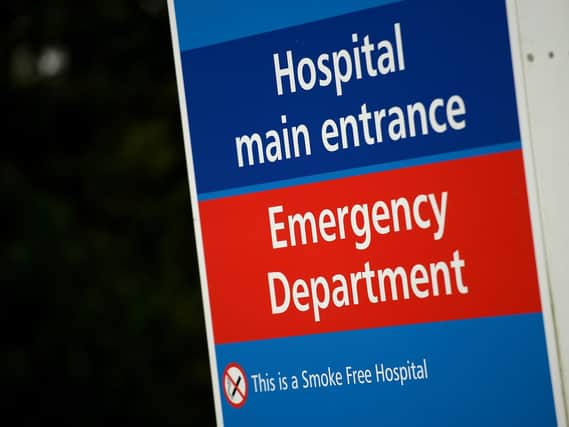Tens of thousands waited more than four hours in Lancashire's A&E departments last year


The trust's major A&E department is performing extremely badly against the NHS national standard for waiting times in A&E.
The NHS target is for 95 per cent of people visiting A&E to be discharged, transferred or admitted to a ward within four hours of arriving.
Advertisement
Hide AdAdvertisement
Hide AdAt the Lancashire Teaching Hospitals Trust that figure was just 69 per cent.
The 2017-18 report shows that the trust's major A&E department saw the equivalent of 186 people a day last year.
Around 67,800 people went to A&E, down from 87,600 the previous year.
Of these, 20,794 waited for more than four hours, from arriving in A&E to being discharged, transferred or admitted to a ward.
Advertisement
Hide AdAdvertisement
Hide AdDr Chris Moulton, vice president of the Royal College of Emergency Medicine, said that the pressure on A&E has "spiralled out of control".
"If you keep stretching an elastic band, eventually it will snap," he said. "You don't ask 'why did the elastic band snap' - it snapped because you stretched it."
He said that A&E departments were struggling to cope with the demands of a growing and ageing population, particularly since a lack of social care beds keeps elderly patients waiting in A&E.
He said that the more "badly stretched and understaffed" departments were, the more difficult it is to recruit junior doctors, creating a "vicious circle" of staff shortages.
Advertisement
Hide AdAdvertisement
Hide AdDr Moulton still supports the 95 per cent target, saying that it's a "good pressure" on emergency departments to keep as few patients waiting as possible.
"Nobody wants to keep patients waiting," he said. "That's anathema to any emergency doctor."
According to Dr Moulton, the solution is simple - more acute hospital beds, increased capacity in social care, and the staff and facilities to keep those beds open.
He said: "It's not a magic formula. It's a blindingly obvious solution."
Advertisement
Hide AdAdvertisement
Hide AdIndependent health charity the King's Fund said that A&E performance is a "barometer for the overall performance of the health and care system".
Senior analyst Deborah Ward said: "A&E performance is influenced by activity and pressure in other services, affecting both the number of people going to A&E, and how quickly A&E can treat them."
She said that the availability of social care services to support people at home, and how quickly wards are able to accept people who need to be admitted, were two key examples.
"Some of the pressure comes from within A&E departments," she said. "Staff shortages are particularly concerning, and many have a lack of physical space. Some departments see twice as many patients as they were built for."
Advertisement
Hide AdAdvertisement
Hide Ad“However, it isn’t relentlessly bad news,” she added. “A&E waiting times, whilst longer than we would like, are about average when compared to similar countries, and patient satisfaction is holding up.
“In July 2018, 87 per cent of people said they would recommend the care they received in A&E to their friends and family.”
In England there were 23.8m visits to emergency departments last year, including urgent care centres, minor injury units and walk-in centres as well as major A&Es.
Of these, 88 per cent spent four hours or less in A&E. This figure has been steadily decreasing - the last time the 95 per cent standard was met was in 2013-14.
Advertisement
Hide AdAdvertisement
Hide AdCommenting on the national figures, an NHS spokesperson said: "Minor injuries have fuelled a significant rise in A&E visits over the last decade.
"Yet against this backdrop, and with pressures increased by the hottest summer on record, hard-working NHS staff saw, treated and discharged or admitted 50,000 more patients within four hours last month than August last year."